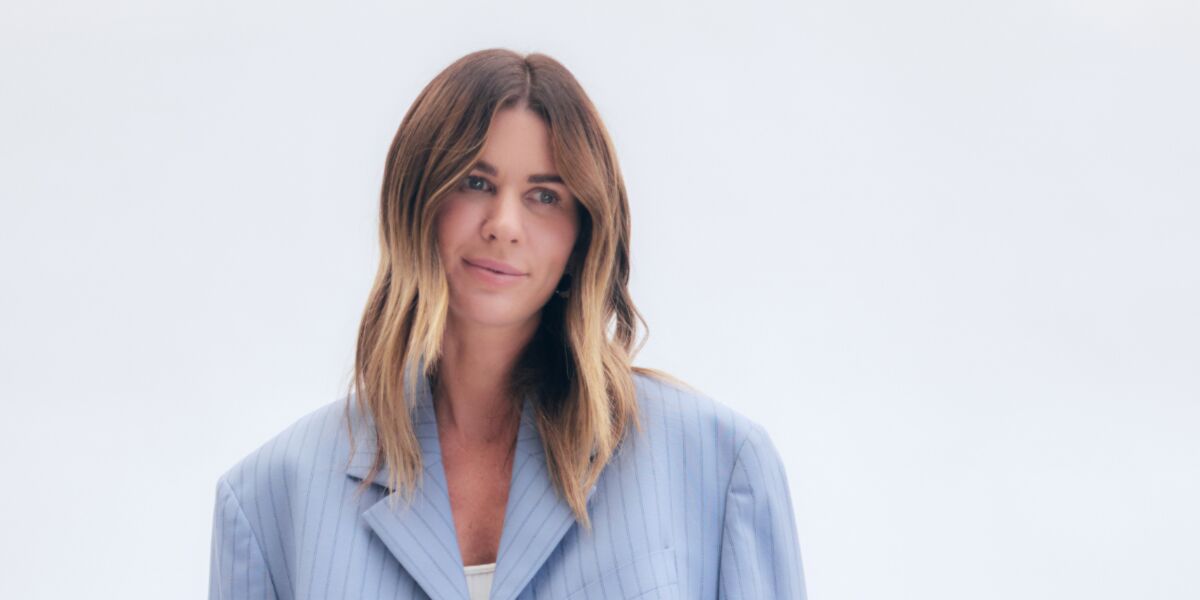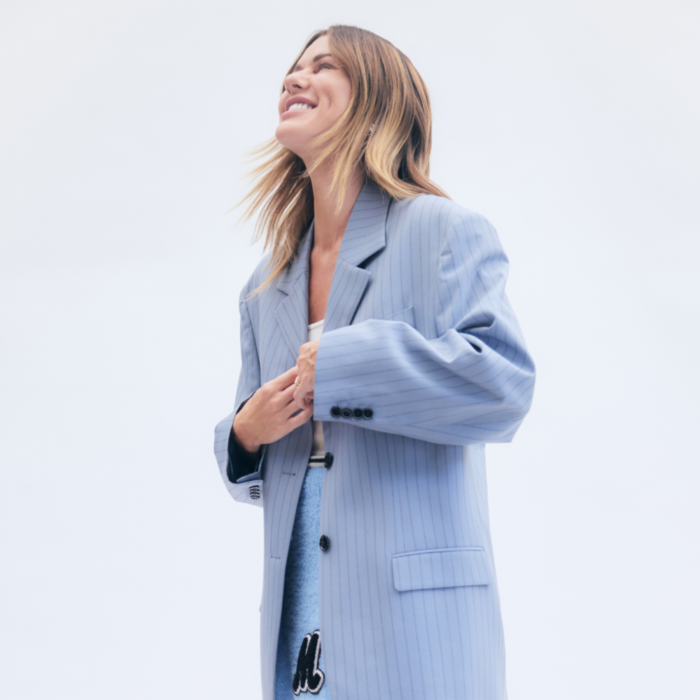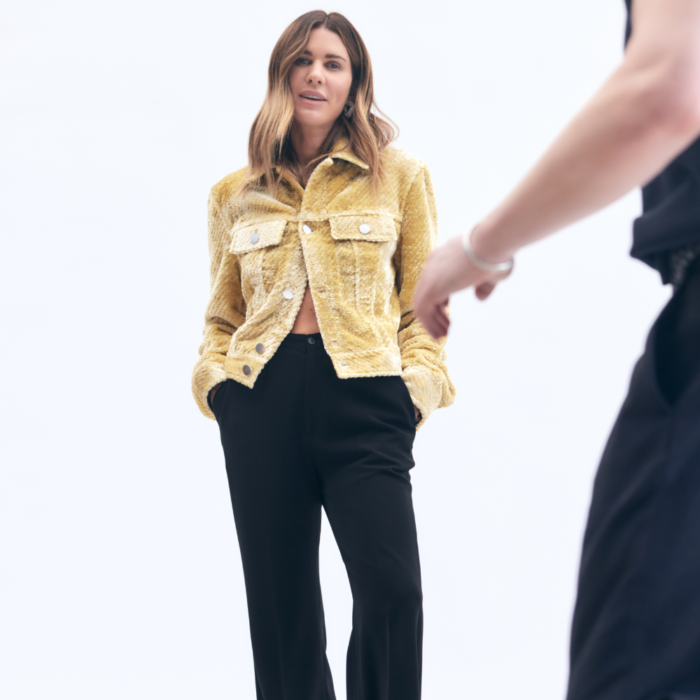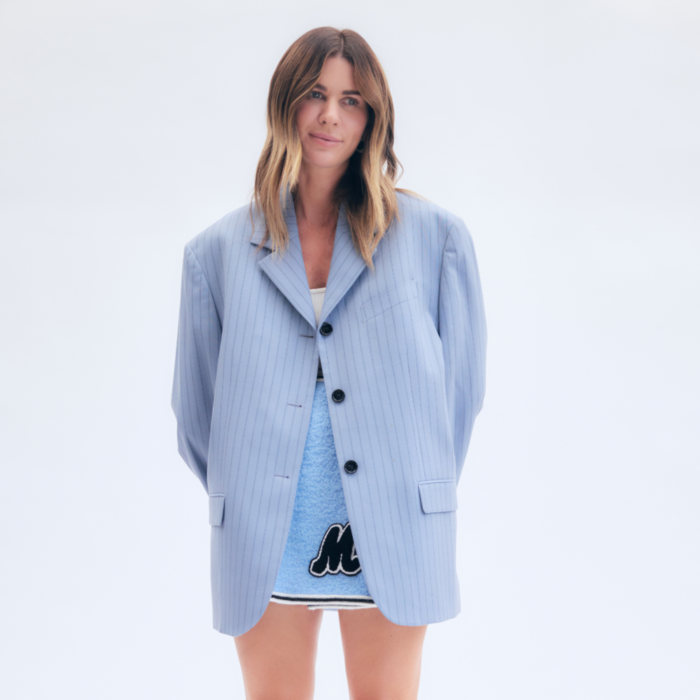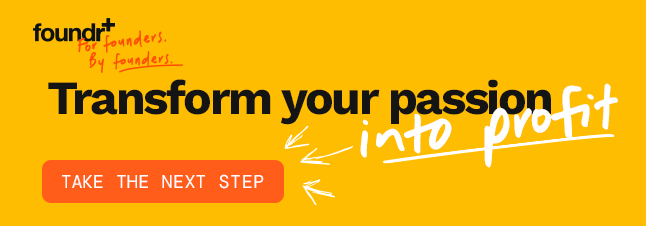“The best thing about Triangl that I took away from it was that it does not matter what your material successes are if inside, it just isn’t working.”
In 2012, Erin Deering and then-partner Craig Ellis launched Triangl, a women’s swimwear company born from a discussion they had on a Melbourne, Australia, beach, the location of their second date.
“I went to find a bikini because a second date at the beach is a little bit nerve-racking,” she says. She wanted something nice but not too expensive. She couldn’t find anything.
“We ended up chatting about it and pretty much then and there [said], ‘There’s a gap in the market. This could be really fun. Why don’t we keep talking about it?’ And Triangl was pretty much born that day,” she says.
It was the beginning of a whirlwind career that would take Deering to Asia and Europe and gain her a spot on the Rich List in 2019, her worth topping $35 million. Celebrities and influencers clambered for her bikinis.
“So it was all very quick. So we kind of fell in love and had our personal relationship going at the same time as the [business],” Deering says. “So they were always very intertwined and pretty much just the same.”
But Triangl would also stretch Deering to her limits.
“It’s really tough. It’s isolating, and you become your brand. And that is your identity,” Deering says.
“It’s really tough. It’s isolating, and you become your brand. And that is your identity.”
In an effort to recapture her identity and well-being, Deering exited the brand and her relationship with Ellis, with whom she had two children, in 2018.
But not before building an empire of the most sought-after swimwear in the world. The entire journey was a series of moonshots that would create incredible momentum.
Hong Kong
A few months after creating the brand, the couple decided to pick up and move to Hong Kong to be close to the supply chain.
“We just knew that we really wanted to have a crack, and we wanted to do it properly. If we stayed in Melbourne with our identities here and our friends and our distractions, we wouldn’t really commit,” Deering says. “So we packed up everything, sold our small number of possessions, and moved to Hong Kong.”
“So we packed up everything, sold our small number of possessions, and moved to Hong Kong.”
They spent the first year gathering samples from manufacturers, raising money to create their first batch of bathing suits, and building the website.
“There was that first half of 2012 when we were in Melbourne that was just getting ready to move, and so that was exciting, and it was so much potential,” she says. “And then that second half of 2012 was incredibly stressful because we’d given everything up.
We were in Hong Kong. We were flat broke. We didn’t even have money to go back home, and we knew we couldn’t go back home. We had to try everything to get this brand to launch.”
They briefly tried wholesale before switching to a direct-to-consumer (D2C) model, which was more in sync with Deering’s deep conviction in staying connected to the customer.
“My passion really lies in the customer experience and having that direct connection,” she says. “I knew I’d lose that in wholesale. So we were really protective of that pretty early on and made the decision to just do it online.”
“My passion really lies in the customer experience and having that direct connection.”
They sold their first bikini online in January 2013. Friends and family accounted for their first sales, and although they’d launched their website and promoted via social, they weren’t getting much traction that way. Their first sales were mainly through word-of-mouth.
“I think people really undervalue word-of-mouth because it’s not measurable. You can’t say, ‘Look, here’s the return on investment on word-of-mouth.’ But it’s so valuable and it really was huge for us,” Deering says.
They started posting pictures of their bikinis on Instagram, and slowly, they began to gain traction.
“We always had this target that we wanted to sell one bikini a day because that would match our salaries that we were making back in Melbourne,” Deering says. “Without having that crazy expectation, everything felt quite attainable and achievable.”
By 2014, their product had gained so much popularity that copies became a big problem. Every bathing suit company was doing a Triangl copy, according to Deering. Even fashion juggernauts like Victoria’s Secret started copying their styles.
That same year, their manufacturer started selling their suits on the side in China and even tried to register the Triangl name there.
“We learned about IP and trademarks in a really painful way because we didn’t do it at the start,” Deering says. “It cost money, and we didn’t have money. We also didn’t know that it would become what it would become.”
“We also didn’t know that it would become what it would become.”
For a month, they had no product as they switched manufacturers.
Their only solution to all the copies was to keep innovating and launching new bathing suits into the market.
“I can make as much noise as possible sending desist letters, do whatever, but at the end of the day, they’ll keep doing it,” she says. “What we have to do as a brand is innovate, keep pushing forward, know that they don’t have the talent to keep creating because they’re copying.”
Working Lean
From the beginning, Deering and Ellis kept their team small and their operations lean, which she says helped them manage the brand better. They worked out of their apartment for the first two years, only setting up a supply chain office in the latter half of 2014.
“It was Craig and I doing everything,” she says. “We were sending out the product. We were doing the social media. We were emailing the customers. We were doing it all. So we were really able to tune in to what was going on at every angle. And even though the growth looked small from the outside in the beginning, for us, it was huge.”
Their focus was on staying hyperflexible and close to the customer. One of their first staff spends was on a woman in Canada who could handle live chat on the website while Deering slept.
“We launched live chat on our website before any other fashion business would have ever done it because we knew that when you’re buying something as intimate as swimwear, you want to feel like you can ask someone about sizing straight away,” she says.
When they started seeing the money come in, they hired a photographer. Until then, Ellis had been taking the photos while Deering held the light reflector.
“It was all done in that way,” Deering says. “So when we got more money, it was just to put those few things in place to make the brand look better.”
Deering says their focus on being lean allowed them to stay cash-flow positive from the beginning.
“We borrowed to make the product. But once we sold our first bikini, we never borrowed money again,” Deering says.
“We borrowed to make the product. But once we sold our first bikini, we never borrowed money again.”
Deering and Ellis didn’t pay themselves salaries. Aside from rent and other bare essentials, every penny from the business went back into the product.
“We just kept growing our cash, really, and not spending it because we were loving watching it come in. The more we made, the more we put back into making more styles, doing better photo shoots, hiring better models, and getting better photographers.”
Up to her exit, Triangl was still very lean on staff, employing only six people.
Social Reach
Keeping things lean applied to their marketing strategy, as well. Deering and Ellis relied heavily on social media and influencers, to whom they gifted swimsuits in the hopes that they would wear them and post about them.
In fact, they were one of the first fashion brands to use that strategy, according to Deering.
“We would say, ‘We’re sending you this. We don’t need you to post it. We just want you to have it. We think you’ll love it.’ Nine out of 10, even 9.5 out of 10, would post,” Deering says.
“We would say, ‘We’re sending you this. We don’t need you to post it. We just want you to have it. We think you’ll love it.’ Nine out of 10, even 9.5 out of 10, would post.”
Deering found that this strategy led to more genuine posts that attracted their followers. The strategy would usually net them a few new followers per influencer.
In 2014, however, they sent bathing suits to Hailey Bieber (when she was still Hailey Baldwin) and Bella Hadid, two up-and-coming stars who, at the time, were mostly known for their friendships with Kendall Jenner.
Soon, Jenner herself sent them an email requesting some suits. The other Kardashians did, too—including Kim.
“They all really wanted [the brand], and they wore it,” she says. “They never tagged us, but the Daily Mail picked it up, other publications picked it up, and they would talk about us. And so it was happening, anyway. We didn’t need them to tag us in the end because then we would use the photo [from the media] on our page [and] tag them.”
That launched the brand into the U.S. market. The $25 million in sales from 2014 was eclipsed by their 2015 sales: $60 million.
Personal Struggles
The company continued to grow, but as it did, Deering felt like it was outgrowing her.
“In the beginning, it was great, and we loved it. My skill sets were super tangible, and I knew what I was doing. I knew my place,” Deering says. That place was in customer care and social media, particularly Instagram, where the brand had gained 2.5 million followers by 2015.
It seemed the more money the company made, the less in control Deering felt. During that time, she became a mother, and the family moved to Monaco. In 2019, she and Ellis appeared on the Rich List, something that she asked to be taken off of.
“I asked to not go on that every year because I just didn’t want that to be what it was about,” she says. “I didn’t like to attach myself to that. I didn’t know whether it was because I didn’t feel worthy, or I was embarrassed, or because I wasn’t feeling super fulfilled and happy. I didn’t want people to see that and it not be the reality.”
Deering was struggling, feeling like she’d lost her sense of self—like her identity was wrapped up in the brand.
In 2018, she exited the company, and she and Ellis split.
“When I exited in 2018, I did not know who Erin was. I just didn’t know. I had two children. I had all this money, which I didn’t actually really have because [Ellis and I] were settling, and there were disagreements with that. We’ve only just recently settled, so that was also happening. I didn’t want to go back to Australia and come back to Melbourne, and I didn’t want to lose my identity and attachment to Triangl because I knew everyone here was so impressed by that.”
“When I exited in 2018, I did not know who Erin was.”
She says her ego made her hold onto the business, but she had to let go.
“If you don’t feel that fulfillment or that self-worth or that grounded feeling of what your values are and what your belief system is… If you don’t have that, you won’t be happy no matter what you’re doing.”
She teaches that to other entrepreneurs now, particularly women. Deering mentors other founders and has started a new career as a wellness entrepreneur.
“I am ready to go,” she says of her new venture. “It’ll probably be similar goals, but I know that I’m coming from a base of knowing me and knowing what fills me up and what makes me happy.”
Erin Deering on How to Deal with Copycats
By 2014, their product had gained so much popularity that copies became a big problem. Every bathing suit company was doing a Triangl copy, according to Deering. Even fashion juggernauts like Victoria’s Secret started copying their styles.
Here’s Deering’s advice on how to deal with copycats:
- Protect your brand early on with trademarks and copyrights.
- Hire a legal team with product and intellectual property experience.
- Send cease and assist messages to copycat products and businesses.
- But don’t spend too much energy watching your back.
- Instead, keep pushing forward, rely on your talent, and innovate.
“Even if there are still copies, [customers] still will want the original as long as you are still making other products and not getting too stuck.”
